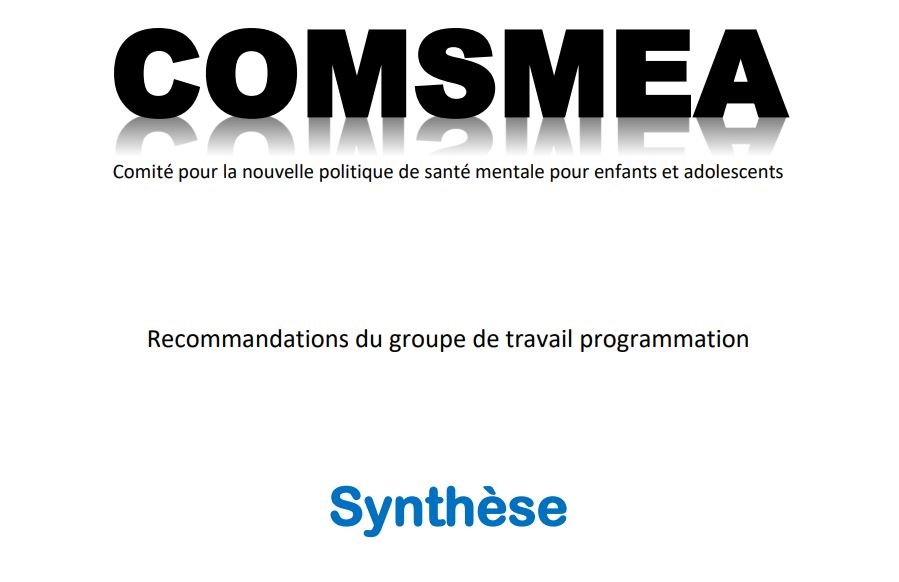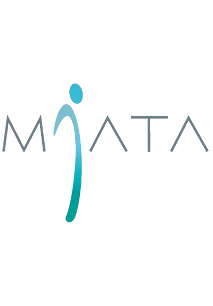Synthèse des Recommandations du Comité pour la nouvelle politique de santé mentale pour enfants et adolescents (COMSMEA) concernant la prise en charge des Troubles de l'Alimentation (TA)
La section "Références Bibliographiques" propose une sélection d'articles scientifiques sérieux, validés et reconnus. Ces articles, rédigés par des chercheurs, des médecins, des psychologues et d'autres professionnels spécialisés dans les TA (Troubles de l'Alimentation), permettent aux professionnels de la santé d'accéder à des ressources variées. Ils sont disponibles au téléchargement dans l'espace membre du CEPIA.
Inscrivez-vous au CEPIA ou connectez-vous à votre espace membre :
https://www.cepia-poids-alimentation.be/espace-membre.php
Références bibliographiques sur les TA (Troubles de l'alimentation)
- Comité pour la nouvelle politique de santé mentale pour enfants et adolescents - COMSMEA (2022). Recommandations du groupe de travail programmation – Synthèse. SPF Santé publique, sécurité de la chaine alimentaire et environnement. https://www.cepia-poids-alimentation.be/userfiles/files/Synthèse%20COMSMEA.pdf
- Couturier, J., Isserlin, L., Norris, M., Spettigue, W., Brouwers, M., Kimber, M., McVey, G., Webb, C., Findlay, S., Bhatnagar, N., Snelgrove, N., Ritsma, A., Preskow, W., Miller, C., Coelho, J., Boachie, A., Steinegger, C., Loewen, R., Loewen, T., Waite, E., … Pilon, D. (2020). Canadian practice guidelines for the treatment of children and adolescents with eating disorders. Journal of eating disorders, 8, 4. https://doi.org/10.1186/s40337-020-0277-8.
- Crone, C., Fochtmann, L. J., Attia, E., Boland, R., Escobar, J., Fornari, V., Golden, N., Guarda, A., Jackson-Triche, M., Manzo, L., Mascolo, M., Pierce, K., Riddle, M., Seritan, A., Uniacke, B., Zucker, N., Yager, J., Craig, T. J., Hong, S. H., & Medicus, J. (2023). The American Psychiatric Association Practice Guideline for the Treatment of Patients With Eating Disorders. The American journal of psychiatry, 180(2), 167–171. https://doi.org/10.1176/appi.ajp.23180001.
- Heruc, G., Hurst, K., Casey, A., Fleming, K., Freeman, J., Fursland, A., Hart, S., Jeffrey, S., Knight, R., Roberton, M., Roberts, M., Shelton, B., Stiles, G., Sutherland, F., Thornton, C., Wallis, A., & Wade, T. (2020). ANZAED eating disorder treatment principles and general clinical practice and training standards. Journal of eating disorders, 8(1), 63. https://doi.org/10.1186/s40337-020-00341-0.
- Hurst, K., Heruc, G., Thornton, C., Freeman, J., Fursland, A., Knight, R., Roberts, M., Shelton, B., Wallis, A., & Wade, T. (2020). ANZAED practice and training standards for mental health professionals providing eating disorder treatment. Journal of eating disorders, 8(1), 58. https://doi.org/10.1186/s40337-020-00333-0.
- National Eating Disorders Collaboration - NEDC (2021). Stepped System of Care for Eating Disorders – Board. https://nedc.com.au/assets/NEDC-Resources/NEDC-Eating-Disorders-Stepped-System-of-Care.pdf
- National Guideline Alliance (UK). (2017). Eating Disorders: Recognition and Treatment. National Institute for Health and Care Excellence (NICE).
- Pehlivan, M. J., Miskovic-Wheatley, J., Le, A., Maloney, D., Research Consortium, N. E. D., Touyz, S., & Maguire, S. (2022). Models of care for eating disorders: findings from a rapid review. Journal of eating disorders, 10(1), 166. https://doi.org/10.1186/s40337-022-00671-1.
- National Guideline Alliance (UK). (2017). Eating Disorders: Recognition and Treatment. National Institute for Health and Care Excellence (NICE).
- Ralph, A.F., Brennan, L., Byrne, S., Caldwell, B., Farmer, J., Hart, L., Heruc, G., Maguire, S., Piya, M., Quin, J., Trobe1, S., Wallis, A., AJ Williams‐Tchen, AJ., Hay, P. (2022). Management of eating disorders for people with higher weight: clinical practice guideline. Journal of Eating Disorders, 10, 121. https://doi.or/10.1186/s40337-022-00622-w.
Sites de recherche proposés :
https://pubmed.ncbi.nlm.nih.gov/
https://www.sciencedirect.com
https://ebpnet.be/fr
https://www.researchgate.net/
https://clinicaltrials.gov/
https://www.cebam.be/fr/
Références bibliographiques sur l'estime de soi et l'image corporelle
- Ata, R. N., Thompson, J. K., & Small, B. J. (2013). Effects of exposure to thin-ideal media images on body dissatisfaction: testing the inclusion of a disclaimer versus warning label. Body image, 10(4), 472–480.
- Bair, C. E., Kelly, N. R., Serdar, K. L., & Mazzeo, S. E. (2012). Does the Internet function like magazines? An exploration of image-focused media, eating pathology, and body dissatisfaction. Eating behaviors, 13(4), 398–401.
- Bell, B. T., Lawton, R., & Dittmar, H. (2007). The impact of thin models in music videos on adolescent girls' body dissatisfaction. Body image, 4(2), 137–145.
- Choi, M., & Toma, C. L. (2014). Social sharing through interpersonal media: Patterns and effects on emotional well-being. Computers in Human Behavior, 36, 530–541.
- Dany, L. & Morin, M. (2010). Image corporelle et estime de soi : étude auprès de lycéens français. Bulletin de psychologie, 5(5), 321-334.
- Diedrichs, P. C., Lee, C., & Kelly, M. (2011). Seeing the beauty in everyday people: a qualitative study of young Australians' opinions on body image, the mass media and models. Body image, 8(3), 259–266.
- Fernandez, S., & Pritchard, M. (2012). Relationships between self-esteem, media influence and drive for thinness. Eating behaviors, 13(4), 321–325.
- Halliwell E. (2013). The impact of thin idealized media images on body satisfaction: does body appreciation protect women from negative effects?. Body image, 10(4), 509–514.
- Hausenblas, H. A., Campbell, A., Menzel, J. E., Doughty, J., Levine, M., & Thompson, J. K. (2013). Media effects of experimental presentation of the ideal physique on eating disorder symptoms: a meta-analysis of laboratory studies. Clinical psychology review, 33(1), 168–181.
- Holmqvist, K., & Frisén, A. (2012). "I bet they aren’t that perfect in reality:” Appearance ideals viewed from the perspective of adolescents with a positive body image. Body image, 9(3), 388–395.
- Kim, J., & Lee, J. E. (2011). The Facebook paths to happiness: effects of the number of Facebook friends and self-presentation on subjective well-being. Cyberpsychology, behavior and social networking, 14(6), 359–364.
- Manjrekar, E., & Berenbaum, H. (2012). Exploring the utility of emotional awareness and negative affect in predicting body satisfaction and body distortion. Body image, 9(4), 495–502.
- McVey, G. L., Kirsh, G., Maker, D., Walker, K. S., Mullane, J., Laliberte, M., Ellis-Claypool, J., Vorderbrugge, J., Burnett, A., Cheung, L., & Banks, L. (2010). Promoting positive body image among university students: A collaborative pilot study. Body Image, 7(3), 200–204.
- Mitchell, S. H., Petrie, T. A., Greenleaf, C. A., & Martin, S. B. (2012). Moderators of the internalization–body dissatisfaction relationship in middle school girls. Body Image, 9(4), 431–440.
- Roberts, A., & Good, E. (2010). Media images and female body dissatisfaction: the moderating effects of the Five-Factor traits. Eating behaviors, 11(4), 211–216.
- Tiggemann, M., Slater, A., Bury, B., Hawkins, K., & Firth, B. (2013). Disclaimer labels on fashion magazine advertisements: effects on social comparison and body dissatisfaction. Body image, 10(1), 45–53.
- Tiggemann, M., Slater, A., & Smyth, V. (2014). 'Retouch free': The effect of labelling media images as not digitally altered on women's body dissatisfaction. Body image, 11(1), 85–88.
- Wood-Barcalow, N. L., Tylka, T. L., & Augustus-Horvath, C. L. (2010). "But I Like My Body": Positive body image characteristics and a holistic model for young-adult women. Body image, 7(2), 106–116.
Références bibliographiques sur l'obésité
- American Academy of Pediatrics- AAP. (2023). American Academy of Pediatrics Issues Its First Comprehensive Guideline on Evaluating, Treating Children and Adolescents With Obesity. https://www.aap.org/en/news-room/news-releases/aap/2023/american-academy-of-pediatrics-issues-its-first-comprehensive-guideline-on-evaluating-treating-children-and-adolescents-with-obesity/.
- Hadjiyannakis, S., Buchholz, A., Chanoine, J. P., Jetha, M. M., Gaboury, L., Hamilton, J., Birken, C., Morrison, K. M., Legault, L., Bridger, T., Cook, S. R., Lyons, J., Sharma, A. M., & Ball, G. D. (2016). The Edmonton Obesity Staging System for Pediatrics: A proposed clinical staging system for paediatric obesity. Paediatrics & child health, 21(1), 21–26. https://doi.org/10.1093/pch/21.1.21.




